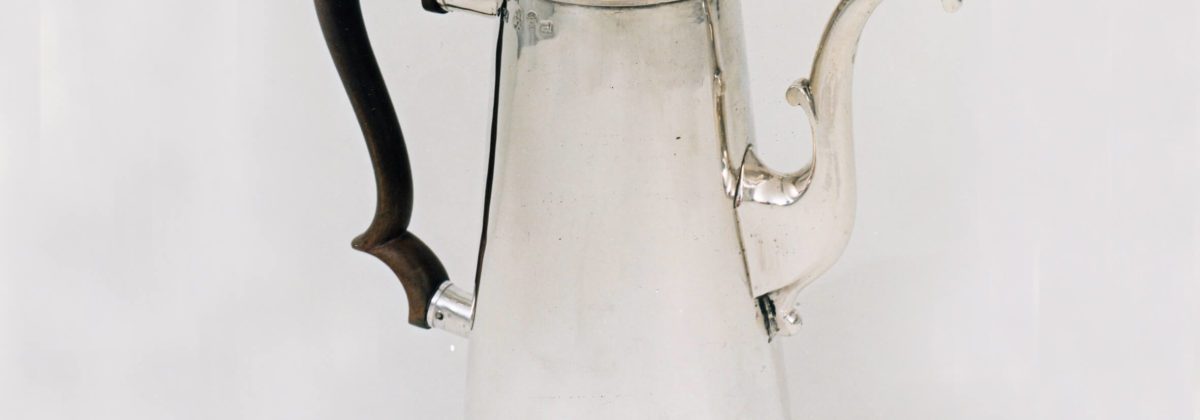Object Number: #904
Newcastle 1731/2
Maker: Jonathan French
City hallmark: Three castles in a heart-shaped shield for Newcastle (Jackson 1921: 362)
Maker’s mark: Monogram “IF” in a rectangular shield for Jonathan French (Jackson 1921: 362)
Assay mark: Lion passant (peculiar to Newcastle) (Jackson 1921: 362, 355)
Date letter: “L” in a shield for 1731/2 (Jackson 1921: 362)
Engraved with scratch weight ’25=10′
Dimensions: Height: 24 cm (9,2 in.); weight: 830 gr.
Detailed Information
The smooth, tapering and cylindrical chocolate pot is raised on a moulded rim foot. The spout is S-curved and it ends in a bird’s head. The slightly domed cover is connected to the corpus with a detachable pin and chain. The detachable baluster finial helps to the stirring of the beverage with a stick. The side handle has an ear shape and a heart thumb rest.
Chocolate was brought into Spain from the Americas and its consumption was spread from there all-over Europe. Chocolate pots have basically the same form as coffee pots. They can be distinguished from coffee pots by their removable finial, which allows the hot chocolate to be stirred before serving.
The history of the goldsmiths in Newcastle goes as far as in the thirteenth century. The goldsmith art flourished in Newcastle mostly in sixteenth century and was still quite flourishing in the seventeenth and eighteenth. The Act of Parliament of 1701 constituted the goldsmiths of Newcastle as an independent corporation. Since 1716, they were working completely separated from other workers (painters, glaziers, etc.). Their corporation closed in 1885.
Maker: Johathan French became a master maker in 1703 and died in 1732 (s. Jackson 1921: 369). He apprenticed by Robert Shrive and was sent to London from the Newcastle Company of Goldsmiths to inform himself concerning the art to assaying. He became officially assay master in 1707, a position he held with ups and downs until his death.
Literature
Grimwade, Ar., London Goldsmiths 1697-1837. Their marks and lives from the original registers at Goldsmiths’ Hall and other sources, GB: Faber and Faber, 1990
Hernmarck, Carl, Die Kunst der europäischen Gold- und Silberschmiede von 1450 bis 1830, C.H. Beck Verlag: München, 1978
Jackson, Ch., J., English Goldsmiths and their marks, London: MacMillan and Co. Limited, 1921





